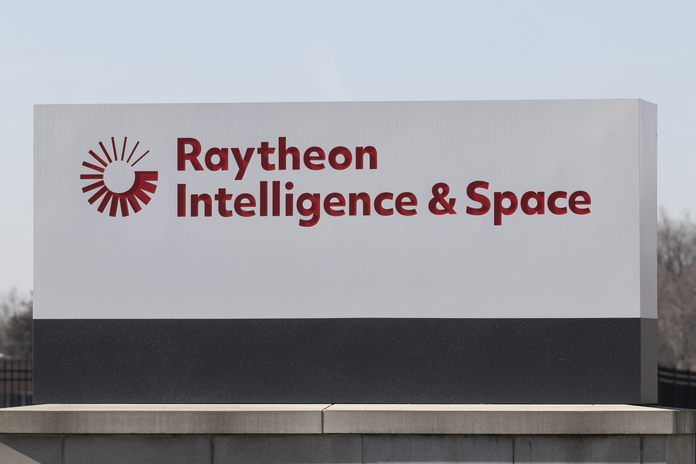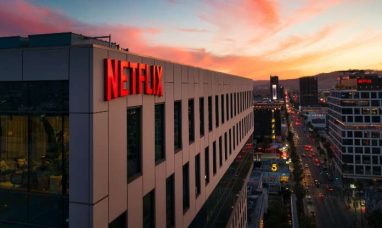Following the disclosure of second quarter data, shares of Raytheon Technologies (NYSE:RTX) are currently trading 4% lower. The company’s non-GAAP EPS of $1.16 topped consensus estimates by $0.05, but its $16.31 billion in revenue fell short of forecasts by $300 million.
In this earnings study, I’ll examine the numbers to determine where Raytheon Technologies fell short of forecasts and perhaps displayed notable performance.
Raytheon Technologies is under a lot of pressure.
The global Q2 2022 overview for Raytheon does not appear to be that bad. Sales increased by 4%, while adjusted earnings per share increased by 28% or 13%. On a global scale, the free cash flow of $807 million, compared to $966 million in the same period last year, could be viewed as relatively underwhelming. As an investor, you probably aren’t looking for increased revenues but lower free cash flow, yet Raytheon Technologies anticipated a cash flow of about $0.8 billion.
We must thus look elsewhere for the disappointing issues and remember the aspects of Raytheon Technologies that investors generally believe to be positive. The security of the defense industry and the growth opportunities provided by commercial aerospace are what I would want if I owned shares in Raytheon Technologies. That is where things went wrong for the company.
Results for Collins Aerospace
Sales at Collins Aerospace increased by 10%, led by original equipment manufacturer (OEM) sales for commercial aerospace that increased by 14%, and commercial aftermarket sales that increased by 25%. A 6% reduction in military sales due to reduced material revenues and anticipated lower F-35 sales mitigated this. Collins Aerospace’s results were not poor, but they already highlight a problem. The defense industry is not giving us the stability we would typically like.
Results for Pratt & Whitney
Pratt & Whitney saw excellent results. Revenues increased by 16% on an adjusted basis, while operating profit increased by 216%. A 26% increase in commercial aftermarket sales and a 22% increase in original equipment manufacturer sales for commercial aerospace were the main drivers of that profits recovery.
Defense sales increased by 5% during the quarter due to the timing of contract awards. According to data we use for the TAF Defense Contracts Monitor, Raytheon Technologies was awarded a $4.4 billion contract to expand the scope of the manufacturing and delivery of the propulsion systems for lots 15 and 16 of the F-35 Lighting II Joint Strike Fighter.
Results for RIS
The results of the RIS (Raytheon Intelligence & Space) show the defense’s dismal performance. Although sales fell by 6%, the sale of the Global Services and Training division was a significant contributor. Due to lower sales of 3C and sensing during the quarter, organic growth was minus 1%; however, classified cyber initiatives compensated mainly for this. The lack of a land sale the previous year, decreased efficiency, and the absence of revenues from the divested businesses all contributed to lower profitability.
Results for RMD
Sales decreased by 11%, according to Raytheon Missiles & Defense’s figures. This was caused by anticipated declines, supply chain issues, and the Next Generation Interceptor program countered by radar purchases. Due to an adverse mix, an unfavorable margin, and lesser volume, profits fell by 35%.
A Difficult Environment
Nothing that strikes out as unexpected when you look at the section results. Raytheon Technologies is experiencing higher volumes across its OEM and services businesses as air travel returns. The defense company mostly copes with predicted decreases and lower volumes due to reduced material receipts and supply chain challenges. What disappointed me, in my opinion, was Raytheon’s admission that there were problems.
Recovery in material receipts has been slower than anticipated, which is valid for labor and supply chain difficulties. Raytheon claims that the lower tier suppliers are the primary source of the problems, but its admission that, in the past, 75 to 80% of laid-off workers returned to their jobs when openings occurred, but that now only 25% do so soberingly casts doubt on any increase in volume and efficiency.
Another truth is that remapping the titanium supply chain will be painful. I raised the concern that titanium may become a vital asset for the aerospace industry and national security in the days before Russia invaded Ukraine. What was widely repeated in the days and weeks that followed was that OEMs and suppliers had stocked up and were able to remap. Raytheon is now claiming that the penalties make it impossible for them to fulfill their delivery commitments:
Beyond those structural castings, however, I would like to assure you that GTF does not contain any more surprises. And, David, there are always minor things—nothing major. On the side of Pratt Canada, you are entirely correct regarding titanium. And once more, the main issue here is the sanctions, which prevent us from continuing to purchase anything from Russia even though we would like to.
As a result, we have been striving to define and qualify second sources. I’ll let you know that we’ll affect a few of our client’s production lines. I’m confident you’ll hear it on the biz jet side as well from them. Simply put, we won’t be able to complete all the deliveries.
Shares of Bombardier (OTCQX:BDRAF) appeared to have fallen by ten percent after Raytheon identified the business jet side where pain will be felt.
The new forecast for Raytheon Technologies brings the positives and negatives together. Collins Aerospace’s guidance is unchanged, but because of the strength of the commercial aerospace industry, predicted profit growth has been increased by $25 million to $50 million. Sales growth for Pratt & Whitney is anticipated to be in the low teens rather than the high single-digit to the low double-digit range, with a $50 million improvement in adjusted profit, which is also driven by the commercial aerospace sales.
The organic growth rate for RIS was predicted to be in the low single digits; however, it is now forecast to be level and stable, with $50 million fewer profits. For RMD, sales are anticipated to rise somewhat. Still, its RMD profit had a pretty substantial disappointing adjustment, falling from a $150 million to $200 million gain predicted to be projected last quarter to $50 million or flat. Raytheon Technologies generally stuck to its sales, EPS, and free cash flow forecasts.
Conclusion
Nothing in the Raytheon Technologies study made me want to rip my hair out. In fact, over the longer run, I still have faith in the power of the merged company’s exposure to commercial aerospace and involvement in the defense sector.
Although Raytheon Technologies had guided for 2022 just three months prior, it was disappointing that the Defense segments are not providing the stability investors are looking for. The company is now being forced to lower expectations because material receipts have not improved as much as hoped, and labor issues remain a problem throughout the supply chain. Raytheon Technologies failed to analyze the realities in the aircraft sector and its supply chain.
Does that imply I’m changing how I rate Raytheon? No. Why I appreciate Raytheon Technologies as an investment has already been demonstrated. I noted last year that Raytheon’s stock was underperforming due to commercial and defense difficulties.
Since then, shares of Raytheon Technologies have increased 12.1% to a market decline of 14%. This increase was caused by a reduction in the commercial and defense headwinds and demonstrated why Raytheon could be a good investment even when not all areas of its business are performing as well.
Featured Image: Megapixl © Jetcityimage















